Israel
Military launches by nation, 2023
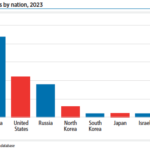
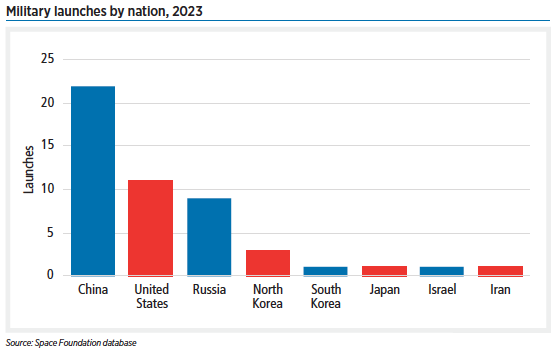
During the first half of 2024, China and the United States each launched five military missions to orbit. The Ukraine war, in its third year, continued to demonstrate the utility of satellites for intelligence, targeting and communication.
Launch Attempts by Country and Category, 2023
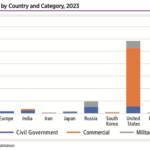
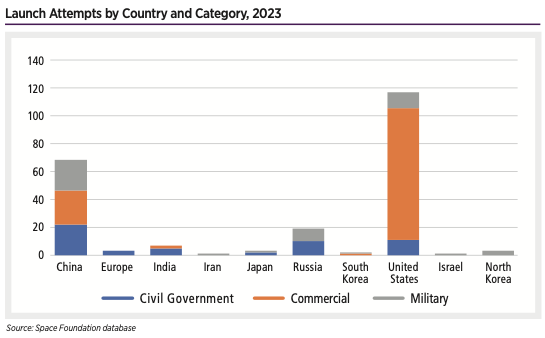
The United States launched 11 military missions in the year, including payloads for the National Reconnaissance Office and a new generation of small communications satellites for the Space Development Agency. Russia launched 10 civil government missions in 2023, including Soyuz launches to send crews to the International Space Station, which remains one area of cooperation between the Kremlin and NASA. India made headlines with its successful launch of a lunar probe while the European Space Agency, awaiting its new Ariane-6 launch vehicle, launched three spacecraft including its Euclid space observatory.
Active Launch Vehicle Operators by Type, 2000-2022
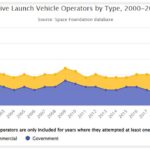
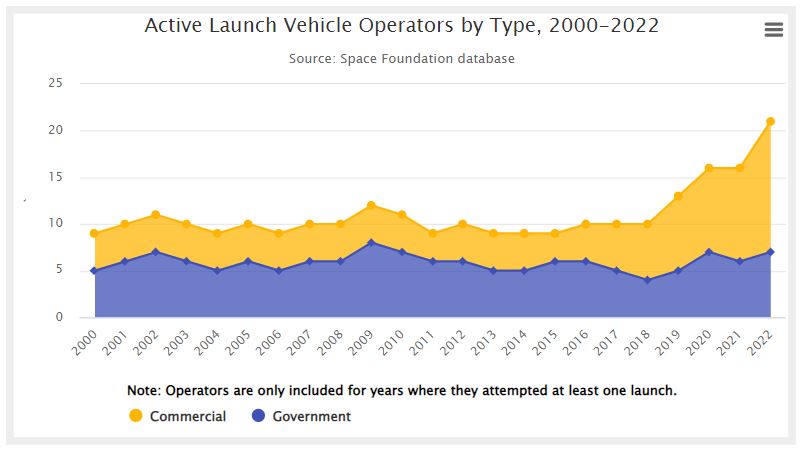
Orbital launch attempts have more than tripled since a lull in activity in the early 2000s bottomed out at 55 attempts in 2004. Part of the rapid growth in the past few years is due to a sharp increase in launch vehicle operators after a long period with an average just shy of 10 distinct operators per year.
Israeli Space Budget, 2009-2018
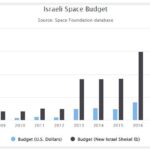
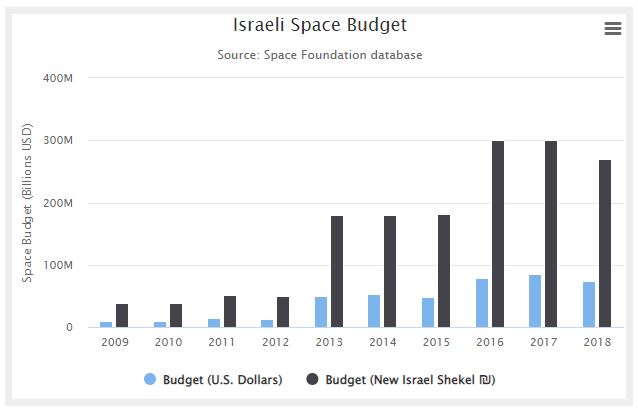 This interactive chart shows changes made in the accompanying table. Use the tools just above the table for sorting, advanced filtering, and other options, these actions will reflect on the…
This interactive chart shows changes made in the accompanying table. Use the tools just above the table for sorting, advanced filtering, and other options, these actions will reflect on the… Europe Continues to Lead in Global Workforce Job Growth

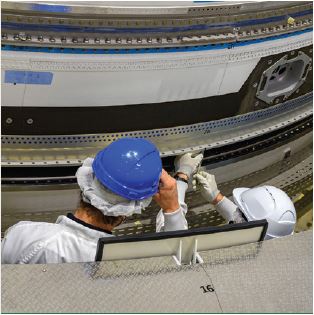
The space industry relies on skilled individuals from a wide variety of fields to enable the cutting-edge developments taking place in this sector. While many countries do not regularly produce metrics on the size of their workforce, these data are available for several major space actors, including the United States, Europe, Japan, and India.
Rivals Launch Military Satellites Amid U.S.-led Space Defense Drills

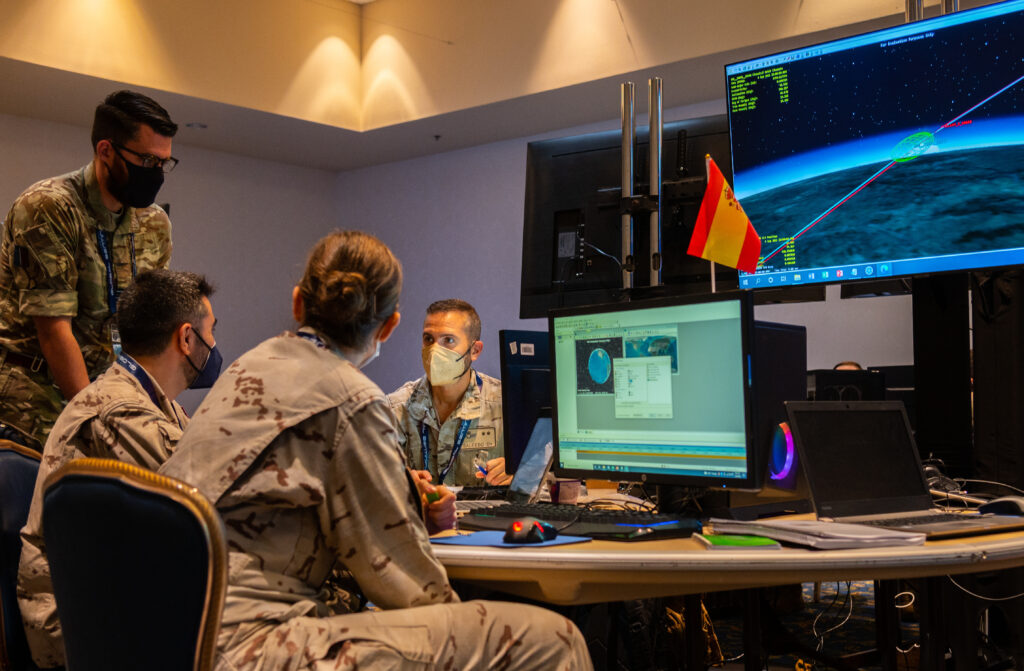
A flurry of military and intelligence satellite launches by rival powers this month came as the United States and two dozen partner nations wrapped up the largest global space defense wargame in history.
Russia launched what some leaders have described as a spy satellite for Iran and its own on-orbit snooping satellite Cosmos-2558, which is circling Earth in an orbit conspicuously close to a recently launched U.S. National Reconnaissance Office satellite, a Netherlands researcher confirmed.
State of Space 2022
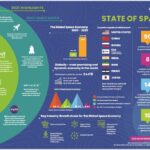
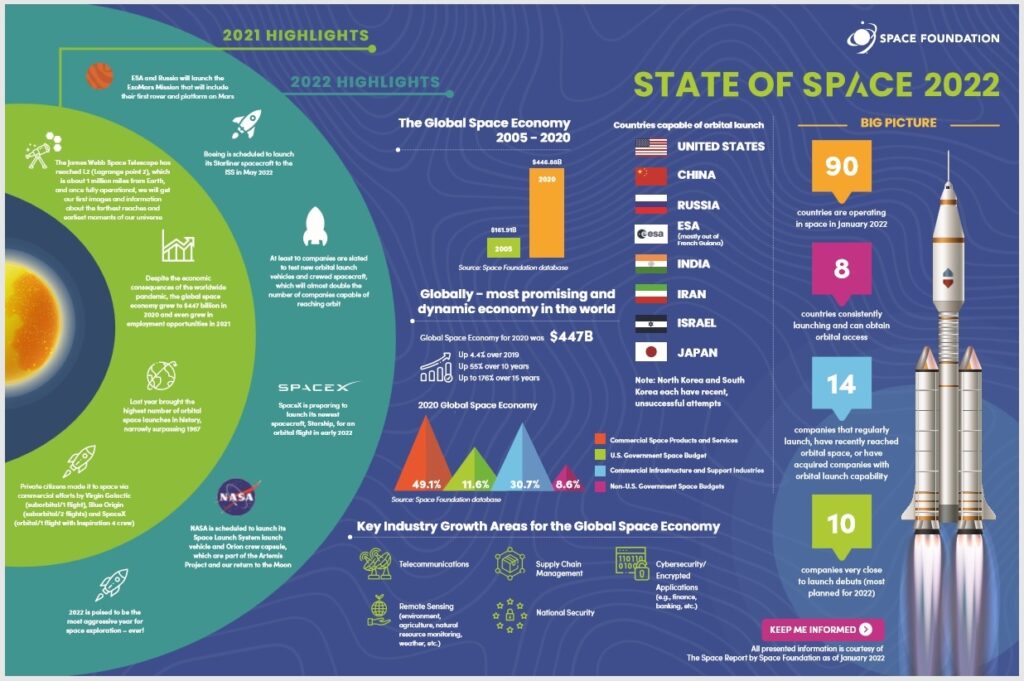
The Space economy hit $447 billion in 2021 and the pace of growth was expected to accelerate in 2022.
The S-Network Space Index℠ Q3 2021 Performance
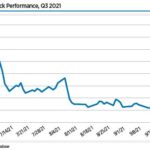
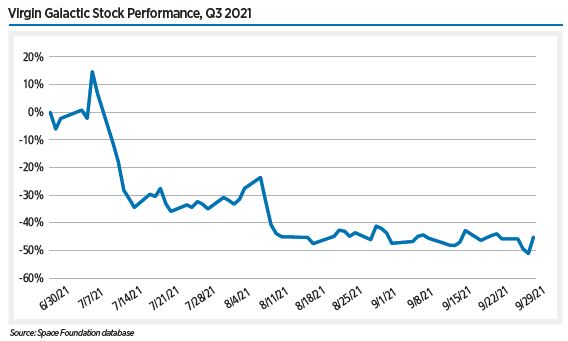
The S-Network Space Index℠ tracks a global portfolio of publicly traded companies that are active in space-related businesses such as . . .
2019 TSRQ3 – Education STEM Proficiency

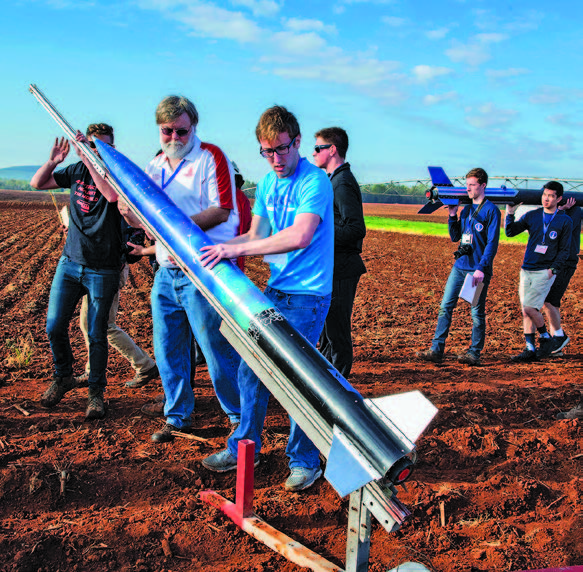
The science, technology, engineering, and mathematics (STEM) workforce is at the core of the space industry—from the mathematicians and astronomers who analyze space to the engineers who design and build the launch vehicles that get us there. This workforce is enabled . . .
2019 TSRQ2 – Economy: Non-U.S. Government Space Investment

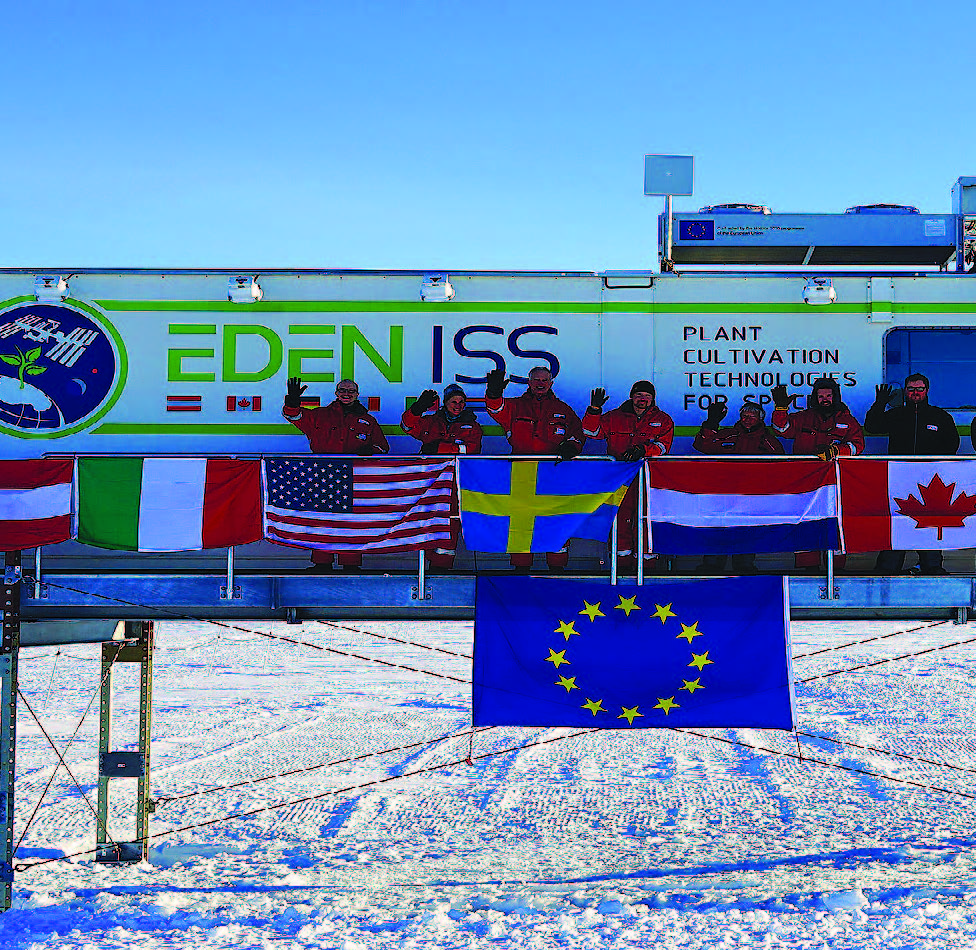
Growth in the government investment sector of the space economy outpaced commercial sectors as the U.S. and non-U.S. government shares of the global space economy between 2017 and 2018. . .